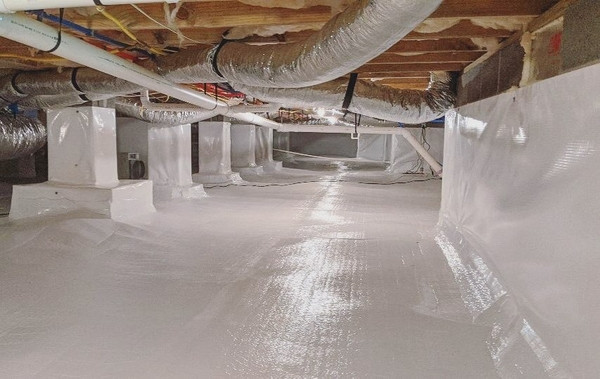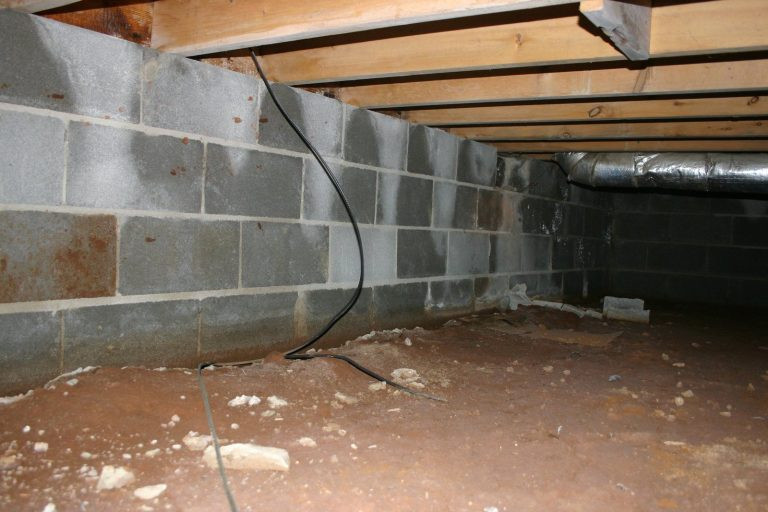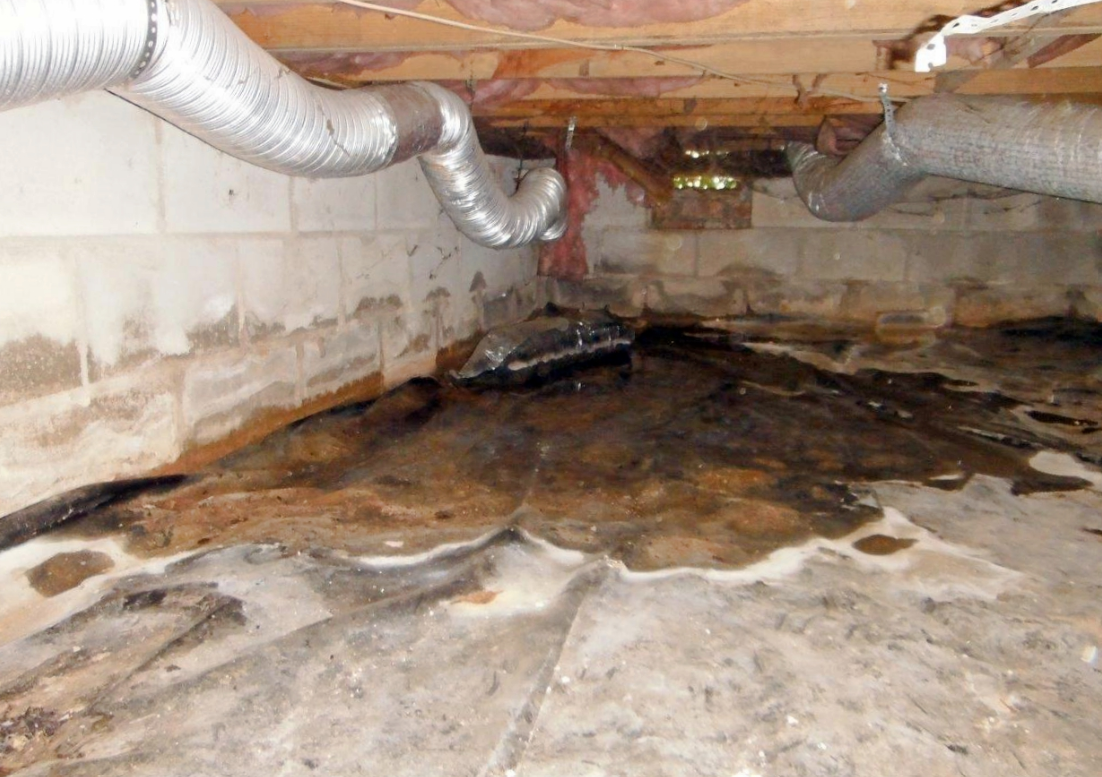Ever considered the potential return on investment (ROI) from waterproofing your crawlspace? While it might seem like a hefty expense upfront, you’re actually protecting your home’s value in the long run. Imagine dodging costly repairs from mold, mildew, and pest infestations while also making your property more appealing to prospective buyers. Not to mention, you could even see a drop in your insurance premiums. But how do you measure the exact ROI? And what does the waterproofing process entail? Let’s unpack this together.
Key Takeaways
- Waterproofing crawlspaces prevents water damage, thereby maintaining the home’s structural integrity and enhancing its market value.
- The initial investment in crawlspace waterproofing can offset future costly repairs, contributing to a high ROI.
- A well-maintained, waterproofed crawlspace can increase a home’s appeal to potential buyers, indirectly increasing its resale value.
- Waterproofing enhances energy efficiency, reducing HVAC system strain and potentially lowering energy bills, providing additional financial benefits.
- Waterproofed homes may qualify for lower insurance rates due to reduced risk of water damage claims, further increasing the ROI.
Understanding Crawlspace Waterproofing
 Maneuvering through the world of crawlspace waterproofing can be an intimidating task. But, don’t worry! You’re not alone, and understanding this process is easier than you might think.
Maneuvering through the world of crawlspace waterproofing can be an intimidating task. But, don’t worry! You’re not alone, and understanding this process is easier than you might think.
Think of your crawlspace like a small basement. It’s a tight, often neglected space under your home that can become a breeding ground for moisture.
Crawlspace waterproofing is the process of preventing water from accumulating in this area. It’s about protection, not just from water damage, but also from the potentially hazardous issues that excessive moisture can cause, such as mold, mildew, and structural damage.
There are several methods to waterproof a crawlspace, and each has its pros and cons. Some folks may opt for vapor barriers, which are large plastic or foil sheets that prevent moisture from seeping into the crawlspace.
Others might choose a more involved method, like encapsulation, which completely seals the space from outside elements. It’s not a one-size-fits-all solution.
Risks of Neglecting Your Crawlspace
While understanding crawlspace waterproofing methods is important, it’s equally vital to comprehend the risks of neglecting this area of your home. If left unattended, your crawlspace can become a breeding ground for mold and mildew, which not only damage the structure of your home but also pose serious health threats.
Additionally, water intrusion can lead to wood rot and structural instability, potentially leading to costly repairs down the line. Critters such as rodents and insects often find damp, dark crawlspaces to be perfect hideouts, causing further damage and possible infestations.
To help illustrate these risks, we’ve compiled a table below:
| Potential Risk | Result of Neglect |
|---|---|
| Mold and Mildew | Structural Damage & Health Risks |
| Water Intrusion | Wood Rot & Structural Instability |
| Pest Infestation | Further Damage & Infestations |
| Deterioration | Decrease in Home Value |
| Unpleasant Odors | Loss of Comfort |
The Cost of Waterproofing Your Crawlspace
You’re probably wondering about the cost of waterproofing your crawlspace.
It’s important to evaluate the initial expenses as well as the long-term financial benefits.
Let’s take a closer look at these factors to help you make an informed decision.
Evaluating Waterproofing Expenses
Before jumping into crawlspace waterproofing, it’s crucial to evaluate the costs involved. The expense varies greatly depending on the specifics of your home, but you should expect to pay anywhere between $1,500 and $15,000.
The range is wide, and here’s why: it’s not just about purchasing waterproofing materials, but also labor costs, which can quickly add up considering the complex nature of the task.
You’ll need to factor in the size of your crawlspace, the extent of moisture issues, and the type of waterproofing method you choose. Basic encapsulation might be on the lower end of the scale, while installing a full drainage system and sump pump could be on the higher end.
Remember, cheap doesn’t always mean better. It’s important to receive multiple quotes from different contractors to verify you’re getting a fair deal.
But don’t just go for the lowest price. Check their references, make sure they’re licensed and insured, and understand exactly what’s included in their quote.
Investing in a well-executed waterproofing job now can save you from costly damages down the line.
Long-term Financial Benefits
Investing in crawlspace waterproofing may seem pricey at first, but it’s essential to contemplate the long-term financial benefits. Waterproofing isn’t just about weather protection; it’s about ensuring that your home remains a valuable investment for years to come.
Consider the following:
- Damage prevention: Waterproofing can prevent costly structural damage caused by moisture. Dampness can weaken your home’s foundation and lead to expensive repairs.
- Energy efficiency: A dry crawlspace is less likely to lose heat in the winter and cool air in the summer. This efficiency can reduce your energy bills considerably over time.
- Preventing health hazards: Moist environments can foster harmful mold and mildew, which can lead to health issues. Remediation and medical costs can add up quickly, but waterproofing can help avoid these expenses.
- Increased home value: A well-maintained, waterproofed crawlspace can boost your home’s value. Potential buyers will appreciate the preventative measures taken, making your home more desirable on the market.
In the long run, the cost of waterproofing your crawlspace could very well be a fraction of the financial burden you’d face without it.
Protect your investment, your health, and your wallet by considering crawlspace waterproofing.
Calculating Crawlspace Waterproofing ROI
When it’s time to protect your home, calculating the return on investment (ROI) for crawlspace waterproofing should be a key factor to evaluate. This conversion of your expenditure into future savings can be a guiding element in making financial decisions about maintaining your house.
To determine ROI, first, you need to assess the cost of waterproofing, including both labor and materials. Then, factor in the estimated value of the damages you’d avoid, like mold damage, structural repairs, and increased energy bills due to moisture infiltration. The difference between these two sums up your ROI.
Don’t forget to account for the longevity of the waterproofing solution. For instance, a waterproofing sealant may last for 5-10 years, while more extensive measures like drainage systems could last for decades. The longer the solution lasts, the higher your ROI.
Keep in mind, ROI isn’t just about dollars and cents. It’s also about peace of mind knowing your home is safe from water damage.
Increasing Property Value With Waterproofing
You might be wondering how waterproofing your crawlspace can boost your property’s value. Well, it’s all about perceived and actual value. A dry, clean, and safe crawlspace not only enhances your home’s appeal but also helps guarantee its longevity.
Here’s how waterproofing benefits your property value:
- Prevents Structural Damage: Waterproofing helps keep moisture out, preventing wood rot and other costly structural damages. Potential buyers don’t want to deal with expensive repairs.
- Enhances Usable Space: Waterproofing can transform your crawlspace into a usable area for storage, increasing the functional square footage of your home.
- Improves Indoor Air Quality: By keeping your crawlspace dry, you’re also preventing the growth of mold and mildew, which can affect indoor air quality and cause health issues.
- Reduces Energy Costs: A dry crawlspace can improve the overall energy efficiency of your home, reducing heating and cooling costs.
Long-term Benefits of Crawlspace Waterproofing
When you waterproof your crawlspace, you’re not just improving your home for the short term.
You’re also setting yourself up for long-term benefits, including enhanced property value, prevention of structural damage, and decreased energy costs.
It’s an investment that can truly pay off in the long run.
Enhanced Property Value
Investing in crawlspace waterproofing might seem costly initially, but it’s one of those smart decisions that pays off in the long run.
In fact, the benefits extend beyond just preventing water damage. It can markedly enhance your property’s value, and here’s why:
- Increased Buyer Interest: Homes with waterproofed crawlspaces are attractive to prospective buyers. They’re reassured knowing they won’t have to deal with moisture-related issues after purchase.
- Higher Appraisal Value: Appraisers often consider the condition of the crawlspace during property valuation. A waterproofed crawlspace implies a well-maintained home, leading to a higher appraisal value.
- Reduced Insurance Costs: Waterproofing can reduce the risk of water damage claims, potentially lowering your home insurance premiums.
- Energy Efficiency: A dry crawlspace can improve the home’s overall energy efficiency, leading to lower utility bills. This is another selling point that can increase your home’s value.
Preventing Structural Damage
 Beyond boosting property value, crawlspace waterproofing plays an essential role in preventing structural damage to your home. Over time, unchecked moisture can wreak havoc on your house, leading to issues like wood rot, mold, and mildew. These problems aren’t just unsightly; they can actually compromise the structural integrity of your home.
Beyond boosting property value, crawlspace waterproofing plays an essential role in preventing structural damage to your home. Over time, unchecked moisture can wreak havoc on your house, leading to issues like wood rot, mold, and mildew. These problems aren’t just unsightly; they can actually compromise the structural integrity of your home.
When you waterproof your crawlspace, you’re taking a proactive step to minimize these risks. It’s a protective barrier against harmful elements seeping into your home’s foundation. You’re not just protecting the wood and concrete; you’re safeguarding the very bones of your house.
Imagine your home is a castle. The crawlspace is often overlooked like a hidden, underground tunnel. Neglect it, and it becomes an easy entrance for enemy forces—in this case, moisture and its damaging effects. Waterproof it, and you’ve secured a critical defense line.
Moreover, the cost of repairing structural damage can be hefty, often running into thousands of dollars. By investing in crawlspace waterproofing, you’re saving yourself from potential financial headaches down the road.
It’s not just about preserving the value of your home—it’s about preserving your peace of mind too.
Decreased Energy Costs
In addition to safeguarding your home’s structure, crawlspace waterproofing can also lead to significant energy savings.
Let’s take a closer look at how this happens:
- Insulation Effectiveness: Dampness can compromise your insulation’s effectiveness. When your crawlspace is dry, your insulation works as it should, reducing the amount of energy required to heat or cool your home.
- Preventing Energy Loss: Waterproofing your crawlspace prevents air leaks which can cause your HVAC system to work overtime, increasing your energy bills.
- Reduced HVAC Maintenance: With less strain on your heating and cooling systems, you’ll have fewer breakdowns and maintenance issues. This leads to long-term savings on repair and replacement costs.
- Healthier Living Environment: A dry crawlspace prevents the growth of mold, which can negatively impact indoor air quality. With better air quality, your HVAC system doesn’t need to work as hard to filter and clean the air, saving energy.
It’s clear that by waterproofing your crawlspace, you’re not only protecting your home’s structure but also decreasing your energy costs.
Consider it as an investment that pays for itself in the long run.
Investing in crawlspace waterproofing is a smart move. Not only does it protect your home from damage and pests, it can also boost your property’s value. Though it can be pricey upfront, the long-term ROI is considerable. So, don’t overlook the importance of a well-maintained crawlspace. Remember, it’s not just about immediate costs, but also about safeguarding your home’s future worth. Make the smart choice, and secure your home’s value with crawlspace




